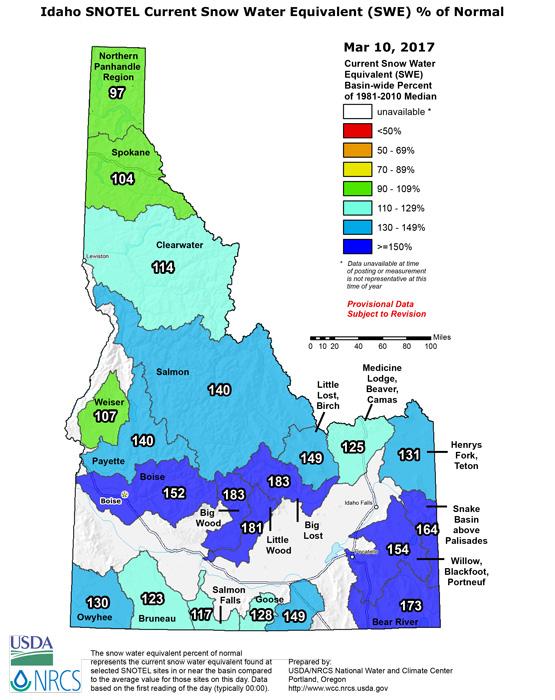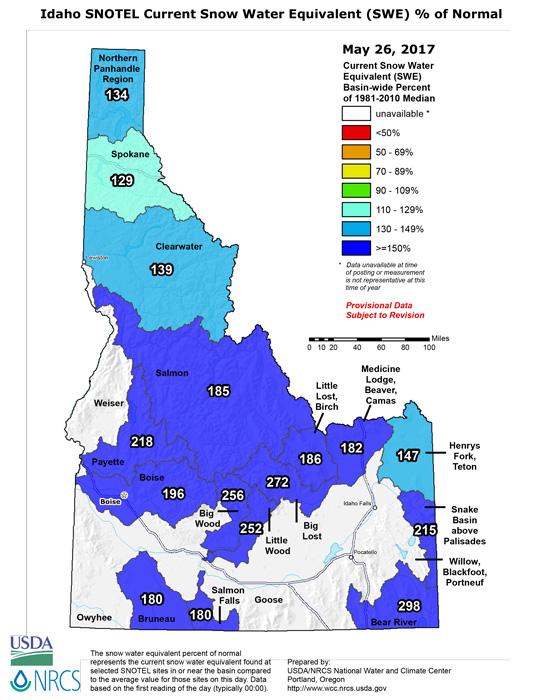According to Idaho Fish and Game (IDFG), the mule deer fawn mortality during the 2016/2017 winter wasn't as bad as they initially thought. Earlier this winter we covered a few in-depth pieces on the status of possible winterkill. You can check out one of the most recent articles that covers the West here: Will the winterkill of 2017 be one for the records?.
Weather wise, the northern portion of the state and the north/central winter weather was closer to average than southern Idaho’s. With that said, the winter survival rate was the second worst in almost 20 years in Idaho. The report from IDFG stated that 30% of radio collared fawns and 90% of radio collared does survived. They went on to say that while those numbers may be a good sign, hunters should expect to see fewer young bucks or no young bucks at all in certain heavy winterkill areas.
The reported elk survival was substantially higher than mule deer with 54% of radio collared calves and 96% of collared cows making it through the harsh winter weather.
Winter Weather Recap

Idaho snow water equivalent March 2017. Source: NRCS National Water and Climate Center
Idaho snow water equivalent March 2017. Source: NRCS National Water and Climate Center

Idaho snow water equivalent May 2017. Source: NRCS National Water and Climate Center
Idaho snow water equivalent May 2017. Source: NRCS National Water and Climate Center
Continued Below.

The statewide average doesn’t represent the vast weather/mortality differences across the state. The McCall/Weiser area had the lowest survival rate with only 3% of the collared fawns surviving winter, while the Smoky/Bennett area had 60% survival and the South Hills had 57%. The state has been monitoring mule deer in the winter and spring for the past 19 years. The lowest winterkill on record was the winter of 2010-11 where 26% fawn survival was recorded and the winter of 2016-17 had 30% fawn survival. This number is well below the 19 year average of 57%. This data is essential for giving managers information for setting seasons and for biologists to react to changing herd sizes (they used this current data to reduce doe tags in many units across the state).
Video Showcasing Idaho's Radio Collaring and Winter Monitoring Program
Placing collars on fawns and calves helps biologists determine winter survival rates of Idaho's deer and elk herds.
Feeding Efforts across the State
According to IDFG, their large feeding program might have reduced winter mortality. This past winter, IDFG staff and volunteers, in cooperation with many private landowners, operated 156 feeding sites that fed more than 13,000 deer, 12,000 elk and 200 antelope. IDFG also closed many of their wildlife management areas during winter to further reduce stress on the herds.
Interesting Statistic from IDFG
The deer that were harvested during the 2011 season, were taken after the lowest winter fawn survival on record (2010/11 winter). That harvest level was only 2,555 fewer deer statewide than the previous year. That number was only a 6% drop!
How each winter impacts year-to-year deer harvests is still something they are hoping to shed light on due to so many variable for hunting hunting success.








0 Comments